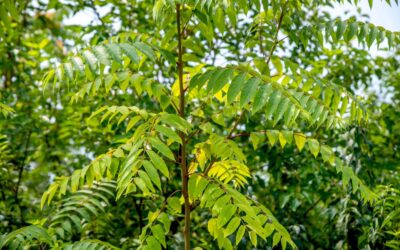If you’re looking for a compact tree with lots of character and style, you won’t do better than a Bigtooth Maple. In spite of its big name, this Western U.S. native (also known as the Canyon Maple) is a slow grower that tops out at 20-30 feet, making it a perfect choice for smaller yards or as a specimen tree anywhere.
Vivid Foliage of a Front Range Favorite
The Bigtooth Maple adapts well to the alkaline soils and dry climate of Colorado’s Front Range. It has 2½-inch deep green 3- or 5-lobed leaves typical of maples that turn a bright red or orange before dropping in the fall. Its unremarkable spring flowers develop into the familiar 2-winged “helicopter” seed pods in the fall.
Growth, Habitat and Resistance to Pests
The Bigtooth Maple does well in full sun or partial shade. It has grey-brown lightly furrowed bark on a relatively thin (8-13-inch) trunk that sometimes develops as a multi-stemmed tree. Its dense, globular shape and thin trunk can make it vulnerable to strong winds—it grows natively in sheltered areas like riverbeds and canyons—but its relatively low height keep it protected in most urban environments. Bigtooth Maples are also highly pest-resistant.
Hardiness
Hardy to -30°F and up to 7,000-foot elevations, the Bigtooth Maple is a rugged yet beautiful addition to most Colorado landscapes.
If you’re planning to add a Bigtooth Maple to your landscape, or have one that needs maintenance, Donovan Arborists can take care of all your tree planting, transplanting or servicing needs. Call us for a free estimate in the Front Range!



